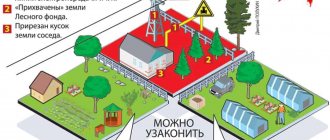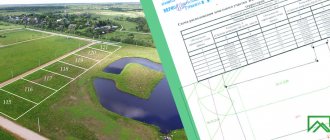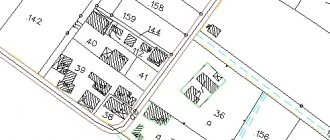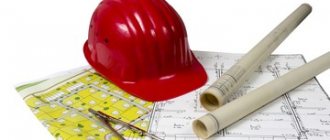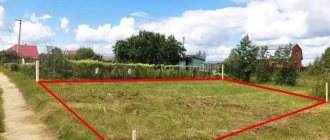Concept and meaning
What is the building area, which should be determined for both the residential building and the land for construction work? It represents indicators determined parallel to the horizontal base, which includes the protruding part of the territory. These indicators will be enough to develop the allocated areas. It is necessary to understand that such an area can be calculated taking into account several indicators at once.
It is not enough to determine the size of the territory that, in principle, is in the possession of a person. It is also important to identify protruding points. Not each of them, even if it is included in the total area, will be part of the development. If the house has a porch or other platforms, as well as driveways, they must be recognized as included in the building area. It is believed that when a house has balconies that are not secured by any load-bearing pillars, then, on the contrary, they should not be taken into account in the process of calculating the area. Accordingly, by design, buildings may require more territory than the calculated areas.
To regulate the activity of calculating areas, it is necessary to take as a basis the Building Codes and Rules, which were adopted in 2003 and can be applied to both private houses and residential multi-apartment buildings.
To find accurate indicators for area, you need to determine what needs to be calculated.
We are talking about several types of building areas, which include the following:
We recommend that you read:
What does a building spot mean?
- Total area. This is the sum of all area indicators. This should include the area of rooms, all internal and external premises, protruding parts and other elements that are important for establishing the indicator in question.
- The area of the room only. It is determined after finishing the internal walls, and the baseboards will not be taken into account. If this is not an apartment building, but a private one, then if there is a stove, it will not be included in this area, but only if it is part of the overall heating system.
- Living area. Here only those rooms that are recognized as residential will be taken into account; other rooms in the building will not be included in the sum of these indicators.
- Usable or usable area. It includes everything from rooms to balconies. However, some objects, such as elevator shafts and ramps, will not be included here.
If you hire specialists, they will be able to establish the necessary indicators through the use of special equipment. However, it is possible to calculate the area yourself if you have the necessary means for this on hand.
How to calculate the percentage of site development
Fireplaces and heating stoves, which were mentioned above, are indicated by decorative elements and are therefore not included in the calculations.
Regarding all open spaces (terrace, balcony, loggia), the space is measured between the walls of the planned building and the fences, that is, the internal contour is taken. When measuring the entire building, the building area is calculated equal to the dimensions of the horizontal section made by the height of the plinths and protruding external elements.
The number of floors of any building also has its own nuances and definition.
Maximum built-up area of a land plot
06 June 2020, 22:09 This is one of the most important parameters when developing the concept of a future warehouse, production or logistics complex.
When designing in the Moscow region, it is necessary to be guided by the following: - the development coefficient of a land plot is the maximum possible territory of a land plot that we can occupy with warehouse or industrial buildings being erected; When determining the maximum development area of a land plot for an industrial or warehouse complex, it is necessary to multiply the total area of the land plot by the development coefficient, thus we will obtain the total development areas of all buildings of the future complex. Development coefficients for land plots of industrial territories in the Moscow region (excerpt from regulatory documents) Types of objects Development coefficient for land plots, not more than (percentage) 1.
Warehouse facilities 60 2. Production facilities: Depending on the purpose of future production From 45 to 60 Thus, we draw the following conclusions: The maximum development area of the land plot of a warehouse complex is 60% of the total area of the territory, production varies from 45% to 60%, depending from destination.
This value must be taken at the earliest stages of design, when developing the stage of pre-design decisions and at the stage of preparing presentation materials for the town planning council.
The optimal development ratio when designing a master plan for a logistics complex is 50% to ensure maximum convenience for maneuvering areas for freight transport and permanent and temporary parking areas.
It is also necessary to provide space for engineering and auxiliary structures of the logistics complex, such as: checkpoints, pumping stations, hydraulic fracturing stations, fire tanks, administrative buildings, solid waste sites, sites for technological maneuvering of trucks, parking for passenger vehicles and storm drainage treatment.
B) In the case of discharge of treated stormwater onto the terrain, obtain
“Permit to discharge pollutants into the environment”
, which is issued by the Department of Natural Resources on the basis of the “Calculation of Permissible Discharge”.
Percentage of land plot development for individual housing construction
It is important to respect the legitimate rights and interests of neighbors.
It is prohibited to clutter their territory with your own buildings, as well as to install fences that will interfere with the development of agriculture in the neighboring territory by cluttering structures and creating shadows.
When determining the maximum development area of a land plot for an industrial or warehouse complex, it is necessary to multiply the total area of the land plot by the development coefficient, thus we will obtain the total development areas of all buildings of the future complex.
residential buildings or outbuildings.
Limit parameters of permitted construction according to PZZ, GPZU
In addition to the types of permitted use, PZZ (GPZU) fix the maximum parameters for the development of a land plot.
So, what are the maximum development parameters according to land use and development rules? There are only three parameters:
- Building density (how many square meters of ground area can be built on one hectare of land). For example, density 000 will mean that 25,000 sq.m. can be built on 1 hectare, and 2,500 sq.m. on a land plot of 10 acres.
- Building height (in meters), for example 20 meters
- Development percentage (as a percentage of the total land area). For example, if the building percentage is 20%, and the plot has an area of 000 sq.m., then the building can be placed on no more than 2000 sq.m. The remaining 8,000 sq.m. must be free from development.
A more precise definition can be found in the PZZs themselves (for example, PZZ g.
Moscow): Limit parameters of permitted construction, reconstruction of capital construction projects, which include: 1) development density of a land plot - the ratio of the total floor area of all capital construction projects that are located and (or) can be located on a land plot (in square meters) to area of the land plot (in hectares), where: - the total floor area of a capital construction project means the total area of all ground floors of a capital construction project (including the technical, attic, and also the ground floor, if the top of its floor is above the average planning level of the ground at least than 2 m), which also includes the area of mezzanines, galleries and viewing balconies and other halls, verandas, loggias and balconies; external glazed galleries, as well as transitions to other buildings, measured in the dimensions of the external walls according to the external measurement; - the area of multi-light premises, as well as the space between flights of stairs wider than the flight width of more than 1.5 m and openings in floors with an area of more than 36 sq.m should be included in the total floor area of the building within only one floor; 2) the maximum number of floors or the maximum height of buildings, structures, structures, where: - the calculation of the number of floors of buildings, structures, structures is carried out in accordance with the provisions of the relevant set of rules, depending on the type of capital construction project; - maximum height of buildings, structures, structures - the vertical linear dimension of a building, structure, structure from each existing land mark within the boundaries of the land plot in accordance with the Unified State Cartographic Basis of the City of Moscow to the highest elevation of the structural element of the building, structure, structure (flat roof parapet; cornice, ridge or pediment of a pitched roof; dome; spire; tower; the highest structural elements of a building should also be considered exits to the roof, superstructures for placing technical equipment, made in permanent structures; in relation to religious buildings - the cross apple in relation to Christian churches, bell towers and belfries, kullas - in relation to mosques, taking into account minarets, the upper elevation of the dome, spire and other vertical structural elements - in relation to synagogues and other religious buildings), while roof antennas, lightning rods and other engineering devices when determining the maximum height of a building, structure, structure are not taken into account; 3) the maximum percentage of development within the boundaries of a land plot - the ratio of the total area of a land plot that can be built up with capital construction projects (hereinafter referred to as the development area), to the entire area of the land plot, where the determination of the development area of buildings, structures, structures is carried out in accordance with the provisions the corresponding set of rules, depending on the type of capital construction project. To change the rules of land use and development, you can use the service of our company for
Building area
An above-ground floor is considered to be a level with the top of the floors located above two meters. Underground and interfloor spaces below 1.8 meters are not considered above-ground floors.
If a building consists of several parts with different numbers of floors or is located on a sloping area, which necessitates the construction of several floors, all its parts are calculated separately.
Multi-storey apartment buildings also have their own characteristics.
The total area is determined here using reduction factors:
- for a loggia - 0.5.
- for terraces and balconies - 0.3;
Multi-level apartments, as a rule, are equipped with inter-apartment staircases. If the height of the flight is more than 1.6 meters, its footage must also be taken into account. The dimensions of a residential building are determined by summing up the data obtained from measurements on each floor.
What is the built-up area?
Design and construction
It happens that the building is located on supports. In this case, the building area includes the entire space underneath, including driveways.
How to determine the number of storeys of a building? All floors are considered above-ground, including the attic and technical (in the case when the level of the top of its ceiling is located 2 or more meters above the planning level).
The underground (of any height) and the interfloor space if its height is less than 1.8 m do not apply to above-ground floors. There are cases when different parts of the building have different numbers of floors.
Sometimes a building may be located on a site that has a slope, then on one side the number of them may be large. In this case, the number of storeys is calculated separately for each of the parts. According to other rules, parameters are calculated for summer cottages and gardening partnerships.
Calculation of building density of a land plot
Association of specialized lawyers Sign up for a consultation Describe the situation and receive a free analysis of the prospects for your case within 30 minutes Order Building density in populated areas plays a big role.
As a rule, density is calculated in thousand.
sq. m. per 1 hectare of land. The most optimal density indicator should be no less than 20% and no more than 55%.
However, in practice these values may be subject to gradation. So, for example, in some areas it can reach 80-90%. In this case, when deciding to build a new building, you can increase it by adding several floors.
But in other zones (most often the outskirts) the density indicator can be significantly lower than 20%.
In this case, some financial problems can be observed, since the maintenance and maintenance of transport and engineering infrastructure will be very expensive. And don’t forget about the road surface; the construction and repair of roads in areas with low building density is very rarely done, which affects the quality characteristics of the roads.
must be carried out by competent specialists to avoid problems. Our office will provide you not only with assistance in calculations, but also with qualified legal support.
Find out on our website: . Land law Land management Land ownership Land supervision Categories of land Call us: +7 (499) 322-28-05 Or on the website and we will contact you Make an appointment Place of work
Percentage of land plot development
Construction coefficient (development coefficient, Building Ratio) is a coefficient established by law that determines the total area of buildings on a land plot (in m2). Electricity at the border of the site.
The landscape is calm. Technical planning has been carried out over the entire area of the plots, the elevation difference is less than 0.5%. There is good year-round access to the border of the plot; roads are cleared of snow in the winter.
On both sides the plots are adjacent to the forest.
The Lutosnya River is 300 meters away. Transport accessibility: regular bus No. 50 from the railway station. “Lobnya”. The plots are located at a considerable distance from the highway, far from noisy cities, in a picturesque and environmentally friendly area of the Moscow region. A wonderful place for summer holidays and year-round living for the whole family.
Site development coefficient
The residential area of a microdistrict is calculated based on the total size of the microdistrict minus the area occupied by the socio-cultural areas of the quarter.
Attention: New objects affect the final indicator of the area occupied by residential buildings.
Therefore, it is important here to take as a basis the updated indicator of the mathematical formula, taking into account the total number of buildings located in the microdistrict.
The density calculation procedure is suitable for all types of blocks and neighborhoods.
The universal formula allows you to determine the most accurate percentage of free and occupied territory. Based on the data obtained, the construction company will be able to plan the scale of its work without compromising urban planning regulations. The formula shows the relationship between occupied and free area of the territory.
Source: https://rusdolgi.ru/procent-zastrojki-uchastka-kak-schitat-29860/
Basic requirements and coefficients
To answer the question of how to determine the area, it is necessary to refer to the regulatory framework adopted at the federal level and regulating the exact rules for carrying out the required calculations. However, the peculiarities of the regions force them to adopt their own rules, which, although they should not seriously conflict with those established by the state, at the same time differ from generally accepted indicators. First of all, this concerns the coefficients.
These indicators represent the ratio of the area of a specific specific territory and the area that is allocated directly for the building being erected during construction work. Accordingly, in each individual region this coefficient will be different. Moreover, it often diverges from the standards established at the federal level. For example, in the Moscow region the coefficient may be forty percent, but according to SNiP it is twenty percent.
The coefficient is recognized as the main value necessary for construction, since it implies the ratio of all areas, and therefore provides the maximum number of options for building volumes.
In addition to the necessary indicators that must be taken into account when determining the size of the development area, it is important to pay attention to the requirements set out in SNiP and applicable to all area options:
- When determining the area of the building itself and general indicators, it is necessary to take measurements using the simplest geometric figures. These can be rectangles or squares. If the object has a complex shape, then it must be divided into similar simple figures, and then sum up the resulting area indicators.
- All values obtained as a result of area measurements must be recorded in square meters and must be rounded to one tenth of a square meter. When the distance is calculated, it is reflected in meters, rounded to one hundredth of a meter.
- When construction is based on standard designs and building structures that have previously been manufactured according to a standard version are used, then a simplified calculation of areas is allowed. There is no need to calculate the area of each floor; it is enough to take either the basement or the first and standard floors as a basis, and then sum up the entire area according to one previously obtained indicator.
These requirements must not be changed, and violation may result in prosecution. Moreover, failure to comply with the calculation procedure, as well as the standards proposed above, can lead to errors in measurements, and, accordingly, incorrect data, which will later be entered into the technical documents of the facility.
Features of calculating the building area
To determine the maximum allowable building percentage, it is recommended to contact a professional. Specialists from relevant organizations will examine the site and calculate the optimal ratio of areas designed for the construction of construction projects and the general territory.
Thanks to ready-made architectural projects with designated parameters of all buildings, as well as the presence of a floor plan, it will not be difficult for experienced specialists to calculate the necessary parameters.
If the project is not ready, you will have to invite a team of topographers to conduct a professional topographic survey. With the help of special programs, they find out the designated area for construction.
What is included in the development area of a land plot?
2)
The building area
(AZ) is defined as the sum of the areas occupied by buildings and structures of all types, including sheds, open technological, sanitary, energy and other installations, overpasses and galleries, loading areas, underground structures (tanks, cellars, shelters , tunnels over which buildings and structures cannot be placed), as well as open parking lots for cars, machines, machinery and open warehouses for various purposes, provided that the dimensions and equipment of parking lots and warehouses are accepted according to the standards of technological design of enterprises.
Also read: List of Documents for Receiving Benefits for Housing and Utilities for a Pensioner Veteran of Labor
The construction area does not include areas occupied by blind areas around buildings and structures, sidewalks, roads and railways, railway stations, temporary buildings and structures, open sports grounds, areas for workers' recreation, green spaces (trees, shrubs, flowers and grasses) , open parking lots of vehicles owned by citizens, open drainage and other ditches, retaining walls, underground buildings and structures or parts of them, above which other buildings and structures may be located.
Number of storeys and auxiliary area
The number of floors of any building also has its own nuances and definition. Each floor, including technical and attic, is considered to be above ground if the levels of the top of the floors are located more than two meters above the planning mark. The underground floor, as well as the interfloor space, the height of which is less than 1.8 m, are not classified as an above-ground floor.
There are buildings in which there are several parts, each of which has a different number of floors. Sometimes the building is located on a sloped area, which can also cause a different number of floors. In this case, calculations are carried out for each part of the building separately.
For city apartments, when calculating the total footage of construction, reduction factors equal to 0.3 for balconies and terraces and 0.5 for loggias are used. The footage of the march, which appears if the apartment has an internal staircase, will be taken into account at a height of at least 1.6 m.
The space of a residential building is carried out by adding up the information obtained from calculations for each floor. In this case, the footage of the balcony, loggia and staircases is added to the measurements of the internal surfaces of the walls.
